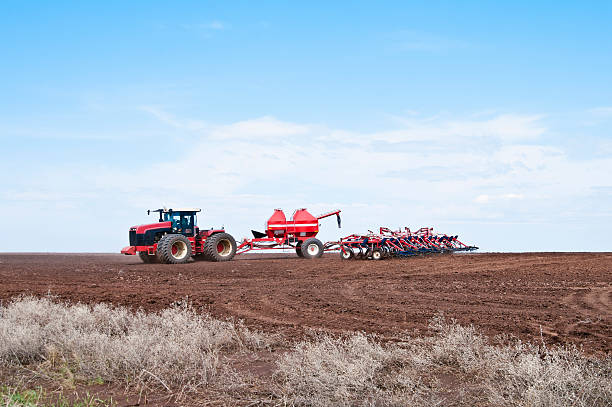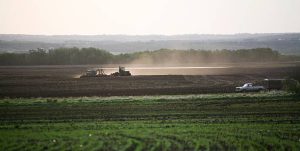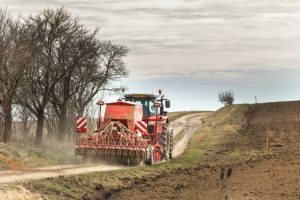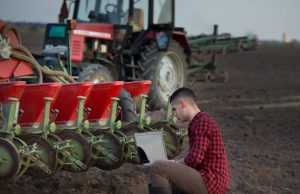In the vast tapestry of agriculture, a stark contrast emerges between no-till and conventional seeding methods. These approaches, on opposite ends of the spectrum, offer distinct advantages and disadvantages, shaping the way we interact with the land and influencing harvest yields, environmental impact, and farm economics.
Conventional Seeding:
-
Method:
Plowing and tilling the land to prepare a seedbed, followed by scattering or drilling seeds.
-
Advantages:
- Easier weed control: Tilling disrupts weed growth cycles, simplifying weed management.
- Warmer soil: Plowing exposes soil to sunlight, potentially accelerating seed germination in colder climates.
- Improved seed-to-soil contact: Tilling can create finer soil particles, potentially enhancing seed contact and germination.
-
Disadvantages:
- Soil erosion: Plowing exposes soil to the elements, increasing vulnerability to erosion, especially on sloping land.
- Loss of organic matter: Tilling accelerates the decomposition of organic matter, depleting the soil’s natural fertility.
- Decreased water infiltration: Compacted soil from tilling reduces water absorption, potentially leading to drought stress for crops.
- Higher fuel and labor costs: Operating plowing equipment demands significant fuel and labor input, increasing operational costs.
No-Till Seeding:
-
Method:
Planting seeds directly into undisturbed soil, often through a cover crop residue layer.
-
Advantages:
- Reduced soil erosion: Undisturbed soil and cover crops act as a natural barrier to erosion, conserving valuable topsoil.
- Improved soil health: No-till promotes increased organic matter content, better water infiltration, and a thriving soil microbiome, enhancing overall soil health.
- Reduced fuel and labor costs: Eliminating plowing lowers fuel and labor expenses, improving farm profitability.
- Increased carbon sequestration: Undisturbed soil retains more carbon dioxide, contributing to climate change mitigation.
-
Disadvantages:
- Weed control challenges: Cover crops and undisturbed soil can favor weed growth, requiring alternative weed management strategies.
- Slower initial germination: Cold, compacted soil in no-till systems can lead to slower seed germination compared to conventionally prepared soils.
- Requires specialized equipment: No-till drills need to be specifically designed to penetrate undisturbed soil and manage cover crop residue.
Choosing the Right Method:
The choice between no-till and conventional seeding depends on several factors, including:
- Soil type and climate: No-till can be less effective on erosion-prone soils or in very cold climates where warm soil is crucial for germination.
- Crop type: Some crops benefit from the finer soil tilled beds offer, while others thrive in the undisturbed environment of no-till.
- Farm resources and goals: No-till requires different weed management strategies and potentially specialized equipment, impacting farm resources and budget.
Ultimately, no single method reigns supreme. Both no-till and conventional seeding have their merits and drawbacks, and the optimal approach depends on the specific context and goals of each farm. The key lies in understanding the trade-offs and making informed decisions to ensure sustainable and productive agriculture for generations to come.
No-Till vs. Conventional Seeding: A Side-by-Side Comparison
Feature |
Conventional Seeding |
No-Till Seeding |
|---|---|---|
Method |
Plowing and tilling soil, followed by seed scattering or drilling | Planting seeds directly into undisturbed soil, often through cover crop residue |
Soil Erosion |
High risk – exposed soil vulnerable to erosion, especially on slopes | Low risk – undisturbed soil and cover crops act as a natural barrier |
Soil Health |
Declining – tilling depletes organic matter and compacts the soil | Improving – no-till promotes organic matter buildup, better water infiltration, and a thriving soil microbiome |
Water Infiltration |
Lower-compacted soil reduces water absorption, leading to drought stress | Higher – undisturbed soil allows for better water infiltration and retention |
Fuel & Labor Costs |
Higher – requires operating plowing equipment | Lower – eliminates plowing, reducing fuel and labor needs |
Weed Control |
Easier – tilling disrupts weed growth cycles | More challenging – cover crops and undisturbed soil can favor weed growth, requiring alternative strategies |
Initial Germination |
Faster-tilled soil provides better seed-to-soil contact and warmer temperatures | Slower – cold, compacted soil in no-till systems can delay germination |
Carbon Sequestration |
Lower – tilling releases carbon dioxide from soil | Higher-undisturbed soil retains more carbon dioxide, mitigating climate change |
Equipment Needs |
Standard planting equipment | Specialized no-till drills designed to penetrate undisturbed soil and manage cover crop residue |
Suitability for: |
Wide range of crops in various climates, particularly when weed control is crucial | Crops that thrive in undisturbed soil, farms with erosion concerns, or focus on long-term soil health improvement |
Additional Considerations:
- Long-term soil health: While conventional tillage offers short-term benefits like faster germination, no-till has the potential to lead to significantly improved soil health and fertility in the long run.
- Weed management: The shift from tillage to no-till requires adopting alternative weed management strategies such as cover crops, crop rotation, and targeted herbicide use.
- Farm resources and goals: Choosing the right method involves analyzing factors like soil type, climate, crop type, available equipment, and farm budget.
Ultimately, the best approach for a specific farm depends on its unique context and goals. By understanding the trade-offs between no-till and conventional seeding, farmers can make informed decisions that promote both sustainable soil health and productive harvests.





